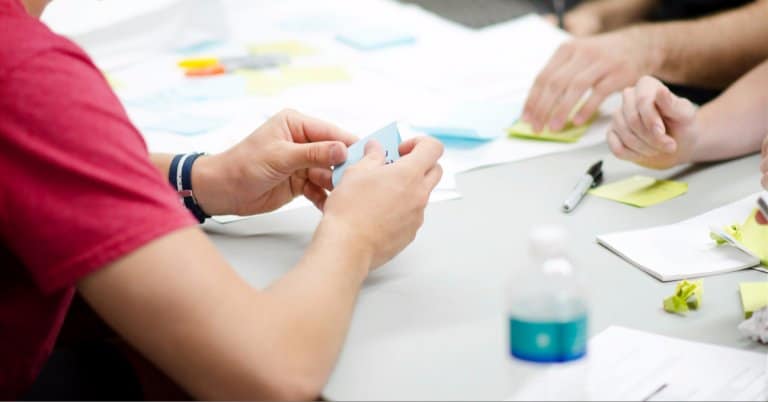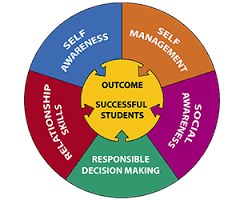5 Social Emotional Learning Activities You Should Be Using Now


Image created by James Coleman's Live 2 Design
Is your child facing a bully in school? Maybe your child's school is pointing the finger at them for being a bully. Children who are categorized in this area typically throw tantrums and struggle with severe mood swings. Their behavior can be characterized as being “out of sorts” or “acting out.” Many children in this situation show very little gratitude, especially when it is expected of them. Have you ever given your child something and practically had to pry a “thank you” out of them?
If you are experiencing this problem with your child, there is a chance they could benefit greatly from Social Emotional Learning or SEL. SEL is a process that teaches a child how to regulate their emotions, and how to control their own physical being. SEL teaches your child important skills they will need in life, like empathy and how to make the right, responsible choices.
SEL was developed by Daniel Goleman, who authored many books on the subject of Emotional Intelligence. One of his most popular and relevant books for this article is Emotional Intelligence: Why It Can Matter More Than IQ.
In his book, Goleman reinforces the concept that children need to develop the skills that allow them to rationalize skills. These skills may be English, Math, and Science, but they also need to learn emotional skills that are unrelated to academic learning. In order for a child to be successful in educational concepts, they must master Social Emotional Learning, which includes effort from parents and from teachers through their classroom curriculum.
Together with a group of educators, Goleman helped develop a system called Collaborative for Academic, Social, and Emotional Learning (CASEL). The overall goal is to transform the way children are taught by transforming the style, various methods, and the curriculum approach used by school systems across the United States. This means that if you are a homeschooling parent, you should be teaching these skills too. Your child will reap amazing benefits from this educational approach.
Social Emotional Learning Activities – Why they Matter
Whether your child attends public school, or they are homeschooled, they can greatly benefit from learning Social Emotional skills. You cannot count on the school system to teach your child these skills.
They have 25+ children per classroom to worry about, and individualized attention is very difficult to receive in this setting. This means that you, as their parent, need to reinforce these skills at home by using different activities and talking your child through emotional situations. To add to this problem, school systems have faced many different challenges in bringing this amazing form of education to children, mostly due to lack of understanding.
Information released by the National Centers for Education Statistics shows that there are a number of concerns associated with the lack of SEL education in the public school system and that enhancing the quality and the importance of SEL training in the classroom and at home is imperative for the future of the public school system. Here are the major problems they have released that could be remedied by a stronger SEL program in public schools:
- In a single school year, elementary and secondary schools faced 52 deaths in the United States alone.
- In the above statistic, 11 of the deaths were suicides induced by bullying, and the remaining 42 were the result of violent actions of other students in the school.
- Child on child violence has increased to the point of approximately 4 in 1,000 students.
- More than 65% of public schools in the United States have reported at least one, and possibly more violent incidents occurring per school year.
- According to all of the statistics they released, there are approximately 750,000 violent incidences in United States public schools each school year.
However, schools who are actively using Social Emotional Learning activities show a much lower incidence of violence. This is because it teaches empathy, how to control your emotions, and that everyone has feelings and experiences pain, both physically and emotionally, the same as the aggressor.
What Benefits Children Gain from Social Emotional Learning?
Other than reducing violence in school, and teaching children how to respond better to tough social situations, what does SEL teach children? Social Emotional Learning activities help instill qualities in our children they need throughout life.
- Impulse control skills.
- Better cooperation with peers and authorities.
- Better openness communication skills.
- Easier empathy processing and the ability to empathize with people they don't know.
- Better self-esteem and a better self-worth.
- The ability to feel and show gratitude without embarrassment.
Even though schools have added SEL to the curriculum, as a parent, you need to teach these skills as well. Public schools cannot do everything and they are already fighting a losing battle in teaching 25+ children who learn in 25+ different ways. As a parent, we need to take active roles in teaching our child and guiding their emotional development, intellectual development, and their emotional development.
We can help build our children's self-esteem in many different ways, but we must understand the challenges that children of today face. Honestly, children have changed and so has the world. Some children have become the cruelest beings on the planet. Many of them are just mean because it makes people laugh, which reinforces the behavior.
Obviously, not all violence experienced in public schools is the lack of social emotional learning being instilled into children at an early age. At times, children just lose control. They are not emotionally mature enough to avoid reacting to every situation that comes their way, but with the ease of access to weapons, the situation is becoming more dire than ever before.
How things Were When Was in School – Most of You Can Relate
I was raised by my grandma, and at the time, I was considered a rebel child. I was considered “out of control.” At 8 years old, we didn't have a metal detector in our school. It wasn't even a thought in the minds of administrators or law enforcement. Children didn't share half naked pictures of themselves online, we were excited by the paint by number pictures in computer lab. We didn't go online to talk about how “stupid” we thought another student was, our parents would have thrown the computer in the trash if we tried.
I came home from school before my grandma got home from work, hoping to have time to watch some cartoons before she got home. I rode by bicycle around the block without my grandma fearing I would get kidnapped, and the neighbors had permission to drag me home by my ear if I misbehaved. If they were related to me, there was a very good chance that I would make it home with a sore bottom.
I would go inside and flip on the television in the evening, gasp at the horror of “I Love Lucy,” (which I am still terrified of), and changed the channel. If there was something on a cartoon that was stupid, we didn't have to be told not to do this at home, we knew it was stupid.
Today, kids live in a different world. Mainstream cartoons show some of the most horrific things you could imagine. Things you wouldn't even see on “Forensic Files.” This means that teaching our children in the same way. According to Goleman, the solution to this problem is to combine SEL in public schools, and also into the everyday home.
Here are 5 of the Best SEL Learning Activities You Should Be Using Now
When you think of Social Emotional Learning, you may initially think that it is dry and boring. However, these 5 activities are exciting for kids, and a great way to improve your family bond.
1. Charades
Charades is a great way for children to learn how to relate to others using nonverbal cues. This will not only help them develop a better understanding of body language, but it will also allow them to read the moods of the people around them.
2. Put the Mood on the Picture
Print out the cards and the labels that go with them. Laminate the cards. (Some games on this sheet may require 2 sets of cards). Have your child match the emotion to the picture.
3. Meditation
If your child is old enough to sit up, they can begin learning to meditate. Of course, your child may not take it seriously at first, but over time, they will learn to use this time to focus their mind. This will help them become more aware of the people around them and their surroundings.
4. The Telephone Game
Children do not only need to learn physical cues from the people around them, they also need to learn how verbal communication cues as well.
To play this game, one child (or a parent) says a phrase to the child. Say the same phrase with a different tone and intention. Compare the original phrase when it gets to the end. Continue trying with different phrases to see if your child can determine your mood based on your tone and wording.
5. Self-Esteem Wall
The self-esteem wall is a great way to boost your child's self-esteem. Have your child post at least one post-it note on the wall each day. More if they would like. Have them write something they accomplished on each sticky note.
The key to this game is that for every note they write for themselves, they must also write something positive about someone else in the house. This teaches them to take pride in their own actions, but also take notice of what others do as well.
Not only will your child enjoy these games, you will know they are learning valuable skills they will need throughout their entire lives. They see them as simple games, but you know they are so much more.
You will also need the information and the print outs from the following posts:
- Put the Mood on the Picture (Printable Cards)
- Ideas for Use "Put the Mood on the Emotion Cards" Game
- Self-Esteem Wall
Recommended Reading







Great article! Thank you for sharing this info!